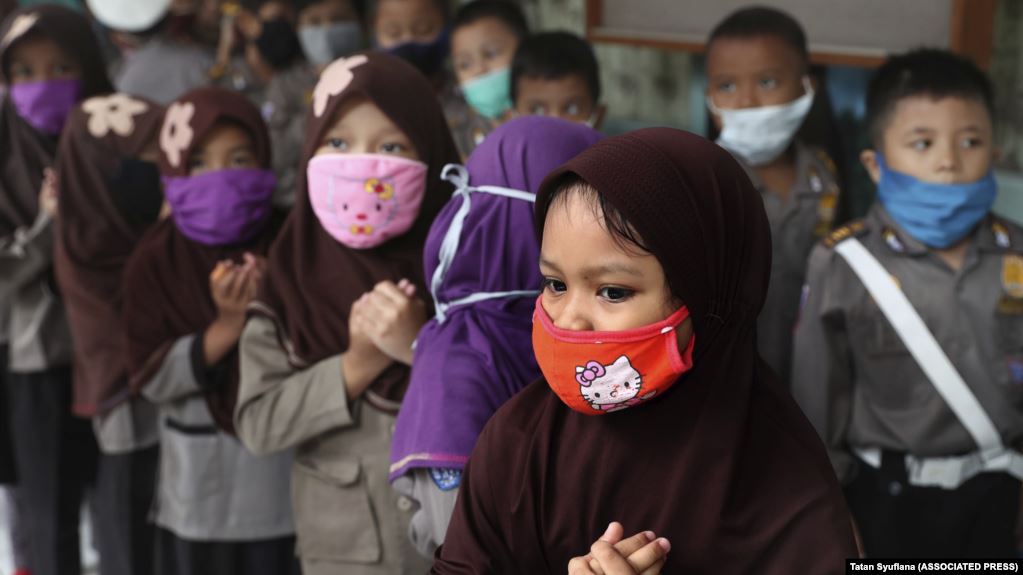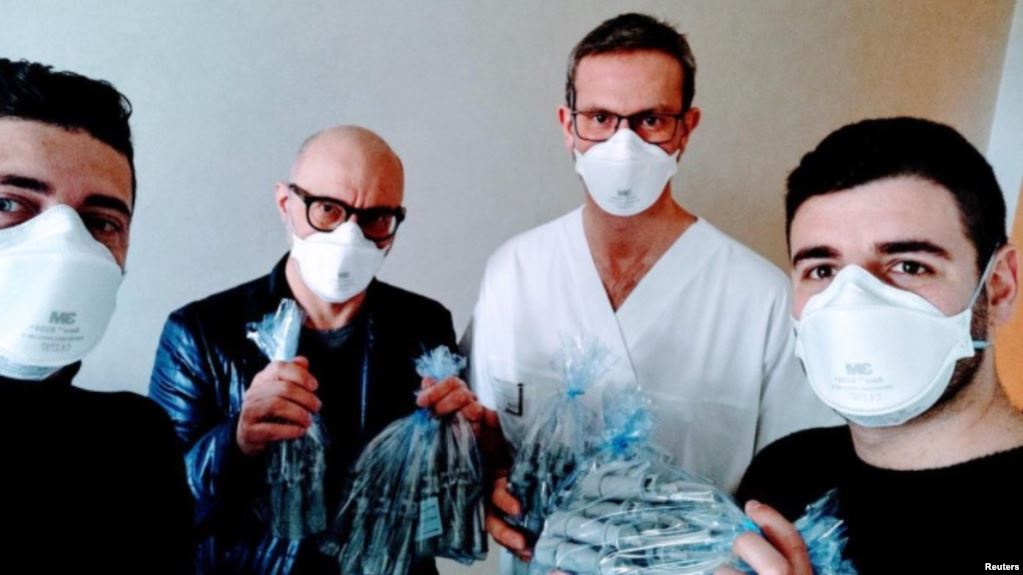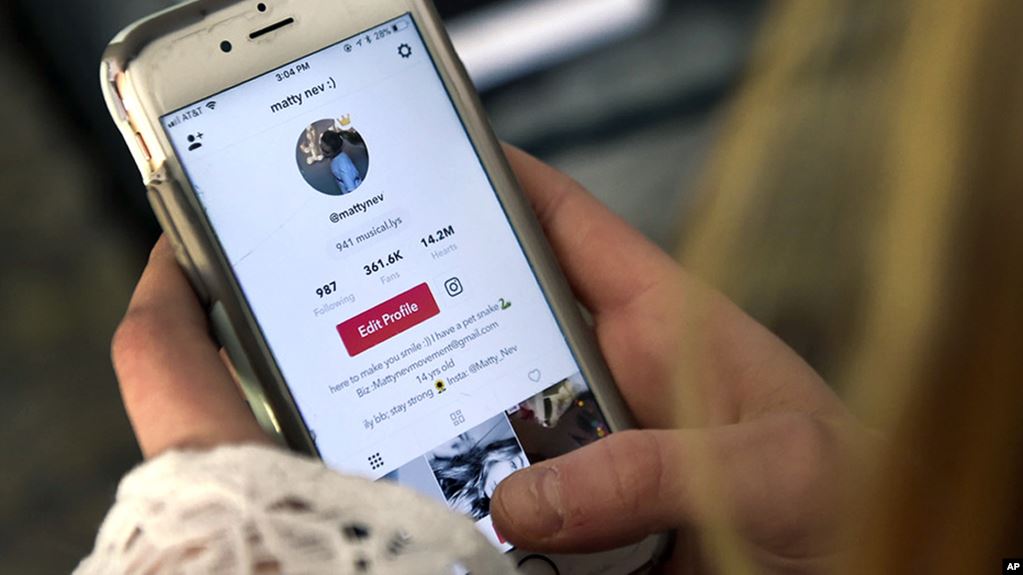뉴스&스피킹(영자신문)
하루 10분이면 영어에 대한 두려움을 극복하고 누구나 유창하게 영어를 구사하실 수 있습니다.
-
 Talking to Kids About Coronavirus With schools shutting down and the ways of daily life-changing, children are hearing more about the coronavirus. They may not fully understand it, or know how seriously to take it, but their lives are affected.
Talking to Kids About Coronavirus With schools shutting down and the ways of daily life-changing, children are hearing more about the coronavirus. They may not fully understand it, or know how seriously to take it, but their lives are affected.
Many parents are trying to decide how to talk with their children about the virus and the outbreak. Some say they are checking in each day to see how their children are doing. But others worry that talking too much about it could make their children more nervous and fearful.
Nicole Poponi is the mother of 10-year-old Clara, and 12-year-old Jane. The family lives in Audubon, New Jersey. She said, “We talk about it a lot. I watch the news every morning, and they’re always watching it, too.”
Both girls said they have talked about the virus at school. Jane said her teachers have discussed it during science lessons.
“I’m not really as scared of it. It’s still not even that many people getting sick here," Jane said. “One of my friends is really scared of it, but she’s honestly really scared of all diseases.”
Beth Young said she has decided to limit the conversations with her four children. They are ages 8, 10,12, and 15. The family lives in Fort Mill, South Carolina.
She said she does not want them to be afraid of getting sick, because “kids get sick pretty often.” And she does not want them to worry about dying.
The new coronavirus causes a disease called COVID-19. For most people—including children—it results in only mild or moderate sickness, such as temperature and cough. For others, especially older adults and people with existing health problems, it can cause more severe illness —including pneumonia, which affects a person’s ability to breathe.
Most people recover. The World Health Organization (WHO) says that people with minor sickness recover in about two weeks. Those with a more serious case may take three to six weeks to recover.
Child psychology experts advise parents and others to be calm and positive when discussing the issue with young people. They suggest centering discussions on active steps one can take. They also suggest doing research in order to answer children’s questions truthfully.
Dr. Jamie Howard is a psychologist at the nonprofit Child Mind Institute. She said it is important to reassure children, ask them if they have questions, and tell them how they can stay safe. The institute and the U.S. Centers for Disease Control and Prevention offer suggestions on talking with children.
Some teachers and sports coaches are working to stop the idea that the virus is tied to any group or race. The new coronavirus first appeared in China. Some American adults are staying away from Chinese restaurants and businesses out of fear that they may get the virus.
Seattle Public Schools in the state of Washington wrote on its website that misinformation has led to fear and anger. The school district’s leaders urged students to combat racism and bias.
“We are aware of reports that some of our Asian students have been targeted and discriminated against in connection to COVID-19,” the school leaders wrote. “This is unacceptable.”
Parents should explain that measures such as wearing covers over your mouth and nose and closing schools are preventative and temporary, Dr. Howard said. She urges parents to follow what the television personality Mister Rogers used to say: look to the “helpers”—to see what doctors, teachers, parents and scientists are doing to keep them safe.
I’m Ashley Thompson.View -
 Volunteers Produce 3D Printed Valves for Italian Coronavirus Patients A small Italian company has used 3D printing technology to quickly produce oxygen valves to treat some coronavirus patients.
Volunteers Produce 3D Printed Valves for Italian Coronavirus Patients A small Italian company has used 3D printing technology to quickly produce oxygen valves to treat some coronavirus patients.
Italy has been battling the world’s largest number of cases of the new coronavirus outside of China.
Cristian Fracassi founded and heads the Italian start-up company Isinnova. He told the Reuters news agency that he heard about a shortage of the valves at a hospital near the northern city of Brescia. The area has had an explosion of coronavirus cases.
The devices are called Venturi valves. They are named after 18th century Italian physicist Giovanni Battista. The devices are used to connect patient masks to oxygen equipment. The oxygen masks are used to treat patients suffering from breathing problems.
Fracassi, a 36-year-old engineer, said the hospital was in serious need of the valves. The devices “are impossible to find at the moment,” he said. He added that the fast-spreading virus was simply preventing current production from meeting the growing demand.
He decided to offer the services of his company’s 3D printing equipment and of his 14 employees to help ease the shortage.
“When we heard about the shortage, we got in touch with the hospital immediately. We printed some prototypes, the hospital tested them and told us they worked,” Fracassi said. “So we printed 100 valves and I delivered them personally.”
The company’s team was able to effectively copy the valves using a 3D printer at the company headquarters in Milan.
The company produces a series of technology products. They include high-tech luggage for Italian designer Gucci and a special paint developed to survive temperatures up to 1,000 degrees Celsius.
Fracassi told Reuters it cost his company very little to produce the plastic valves, which weigh around 20 grams each.
“I’m not going to charge the hospital,” he said. “It was the least I could do to help doctors and nurses who work all day long to save human lives.”
The company's quick action to help coronavirus patients was praised by Italy’s Minister of Innovation Technology Digitalization, Paola Pisano. In a Twitter message, she thanked Fracassi and his employees for supplying the valves. She also published a picture of the freshly made 3D devices.
At least 10 hospital patients had used the new valves as of March 14, reported Massimo Temporelli, the president and co-founder of Italy’s FabLab. The organization creates technology-based solutions for companies. It has worked with Isinnova in the past.
In a Facebook post, Fracassi said he did not want to be called a hero or a genius for the actions he took. “Sure, people were going to die, but we only did our duty,” he wrote. Fracassi added that refusing to act after learning of the need could have likely resulted in more patient deaths.
In the message, Fracassi said the company does not plan to profit from its valve production and will only use its designs and manufacturing methods to help those currently in need.
He added: “Let's focus on the real heroes, those who save lives, who work 16-hour hospital shifts, and are day and night next to the sick, and praise them.”
I’m Bryan Lynn.View -
 How to Clean Off the Many Germs on Your Phone You have been told to wash your hands many times a day to help stop the spread of the new coronavirus. You have been told to avoid touching your face.
How to Clean Off the Many Germs on Your Phone You have been told to wash your hands many times a day to help stop the spread of the new coronavirus. You have been told to avoid touching your face.
But, you also should try to keep clean the device that you may be using now more than ever – your phone.
Scientific studies have shown that the virus can live for two to three days on materials like plastic and stainless steel.
The U.S. Centers for Disease Control and Prevention recommends cleaning all “high-touch” surfaces every day. These include things we touch and come into contact will all day long, like phones, keyboards and computers.
But it is important to be careful. If you do not clean your phone in the right way, it can get damaged.
Here are some things not to do when disinfecting your phone:
· Do not spray cleaners directly on the phone.
· Do not put the phone into any cleaning liquids.
· Do not use devices that use forced air, which are often used to clean computer keyboards
· Avoid rubbing your phone with rough materials that could make small cuts on it.
So, what should you do? Start by turning off the phone and unplugging any wires. You want to make sure your phone is not charging when you clean it.
Below are some suggested ways to clean your phone. With any of these suggestions, be sure not to get the phone wet.
You can use Clorox wipes or wipes with 70 percent alcohol. You can buy these products at a store and wipe down your phone. iPhone manufacturer Apple has warned against using household cleaners on its phones, and says that when using wipes, do so “gently.”
AT&T recommends pushing out any liquid from disinfectant wipes before using them on a phone. It says paper cloths work too. You can spray them with disinfectant and then use the cloth to clean the phone. Again, do not spray the phone itself.
You can also use a soft fabric to clean the phone. Some examples are microfiber cleaning cloths or ones used to clean camera lenses and eyeglasses.
Google suggests cleaning your phone with a cloth that has been lightly covered in soap and water, as long as you are careful not to get moisture in the phone.
Samsung, the world’s biggest phone manufacturer, says it is offering something new: A free phone-sanitizing service involving UV light. The service will be offered at some U.S.-based Samsung stores and service centers. It will expand to other countries in the coming weeks.
Cleaning your phone is one of many measures public health officials are recommending to try to slow the spread of the new coronavirus. Most patients experience only mild or moderate sickness. However, older people and those with existing health conditions are more likely to develop more severe illness.
I’m Ashley Thompson.View -
 Markets Make Some Investors Think Recession, Perhaps Depression The coronavirus outbreak has sent shock waves through stock markets in the United States and around the world.
Markets Make Some Investors Think Recession, Perhaps Depression The coronavirus outbreak has sent shock waves through stock markets in the United States and around the world.
Now, with a sharp drop in share prices, investors are beginning to consider the possibility of something worse than a recession. With the possibility of weak economic conditions over a long period, people are now talking about a credit crisis or even a depression.
The rising shock from the outbreak and questions over how it will spread has left both investors and economists trying to understand the financial effects.
“This market looks like it has already priced in most of a…recession,” said Frances Donald, an economist at Manulife Investment Management. “It is now on top of that having to price in some probability of a credit crisis.”
Experts with leading banks and financial businesses now say they expect a sharp drop in economic activity over the next three months, maybe longer. They note that governments in the United States and Europe have told citizens to stay at home and ordered restaurants and schools to close.
There is hope among some economists, however, that the economy will start expanding again later this year. But that depends, in part, on efforts to contain COVID-19, the disease caused by the new coronavirus.
The S&P 500 is one leading measure of American stock prices. The S&P, on average, has fallen 28 percent from its high to lowest levels during recessions, notes Keith Lerner, a market historian. Lerner works for Truist/SunTrust Advisory Services.
At the end of trading on Monday, the S&P 500 index had dropped nearly 30 percent since its high on February 19.
During the financial crisis in the late 2000s, it was much worse. At that time, the S&P 500 fell more than 50 percent.
“A 2008-like financial contagion is not yet priced into this market,” Donald noted. She said the stock market will not calm down until investors see a calming of credit markets and the number of coronavirus cases starts to decrease.
Stocks fell on Monday, a day after the U.S. Federal Reserve took emergency action designed to strengthen the economy. The Fed used the same weapon -- interest rates -- that helped the country recover from the financial crisis of 2007 to 2009.
But the market’s reaction on Monday after the Fed’s decision to cut interest rates is “a sign of a total breakdown of confidence,” said economist Peter Cardillo of Spartan Capital Securities. He says that brings up the main question: how bad a recession will we have?
Joachim Fels serves as global economic advisor at PIMCO. He said in a written commentary that a worldwide recession appeared to be inevitable. He added that the job for governments and central banks was to try to make the recession as short as possible and to avoid an economic depression.
Fels defined a depression as a prolonged period of weak economic activity, a large rise in unemployment, businesses going bankrupt and bank collapses.
One big Wall Street name is very concerned. Billionaire investor Ray Dalio is worried that the Federal Reserve used all its power too early when it cut interest rates to near zero.
Dalio says he was concerned that another economic downturn could leave nowhere to go but to the same road that brought on the depression of the 1930s.
Experts with Deutsche Bank noted last week that the market’s recent volatility was coming at “a frequency previously seen only in the Great Financial Crisis and the Great Depression.”
“Nothing else matters if we can’t get this under control,” said Eric Winograd, chief U.S. economist at AllianceBernstein. Winograd noted that he does not expect a depression, but a very bad recession.
I’m Caty Weaver.View -
 ‘No Handshake? No Kiss?’ Greetings in the Age of Coronavirus From VOA Learning English, this is the Health & Lifestyle Report.
‘No Handshake? No Kiss?’ Greetings in the Age of Coronavirus From VOA Learning English, this is the Health & Lifestyle Report.
Every culture has some sort of person-to-person greeting. But they are different all over the world.
In some countries such as the United States, handshakes and hugs are the norm. In many European cultures, kisses on the cheek or air kisses are the thing to do when greeting people. And if you play on a sports team, high fives may be the greeting -- no matter what your cultural background.
These are our traditions during normal times.
The World Health Organization recently declared the new coronavirus a “pandemic.” Health officials all over the world are urging people to wash their hands frequently. People are warned to avoid large crowds and to practice social distancing to control the spread of the disease.
This has led to new ways of greetings around the world.
The new COVID-19 virus came from Wuhan, China. So, it is not surprising that a video featuring something called the “Wuhan Shake” recently went viral.
In the video, a man offers his hand to another man for a handshake. Instead of shaking hands, the two men greet each other by kicking feet – quick right kick, quick left kick. The video then shows more men greeting each other this way. It looks like a dance step or a soccer move.
Other videos are appearing on social media showing people in other parts of the world using the foot tap as a greeting.
Changes in the workplace
Zheng Yu Wen is a television host for Voice of America’s China service. Her job involves contact with many on-air guests. So, she says she has changed her guest greeting policy.
“So, starting today [March 12] I was telling all my guests who appear in the studio -- we don’t shake hands anymore. We do elbow touch, we do foot tapping or, we say, foot kissing...”
Another journalist in VOA China’s branch, Sharon Wu, is taking a different approach. For now, she has not changed the way she greets guests. However, she has a new after-greeting habit – group hand-washing.
“Recently we’ve had some guests coming to the studio. And for me, I still shake hands with them. But after that I say, ‘Okay. Let’s both go to the restroom and wash hands.’ ”
Mir Abdul Moshref works at Voice of America in the Afghan service. He says that while hugging between men and women is not common, same-sex hugging is. However, those who used to hug have started using new ways of greeting people.
“Usually people are not shaking hands. But, they are greeting verbally. They are not hugging, which is common among Afghans here in my service. We are just elbow-touching and sometimes we are kicking feet [with] each other. And sometimes we are just, you know, having a bump-bump to each other.”
In Iran, people have used a similar greeting called “butt bump.”
Besides the foot kick, butt bump and elbow touch, there are other ways to greet people without touching.
Many Asian cultures already use non-contact greetings. So, people in this part of the world may have an easier time avoiding person-to-person contact. In Japan, a deep bow with both hands kept down to the sides is a traditional greeting.
No more kissing ... for now
In Europe, kissing is a common way to greet people. People in France and other parts of Europe often use two kisses -- one on each cheek -- or in the air as a greeting. People in Switzerland give three kisses.
Reuters reported that health officials in Switzerland and France have advised people to stop the traditional kiss greeting. And the Italian government has banned kissing in an effort to stop the spread of the disease.
This is not the first time a government has made lip contact between people forbidden.
In 1439, kissing was temporarily banned in England during ceremonies involving King Henry VI. This was to avoid endangering the King’s life during the Plague.
Kissing in public was also banned and punishable by death in Naples, Italy around 1562. The reason?
To stop the spread of disease.
And that’s the Health & Lifestyle report. I’m Anna Matteo.View

